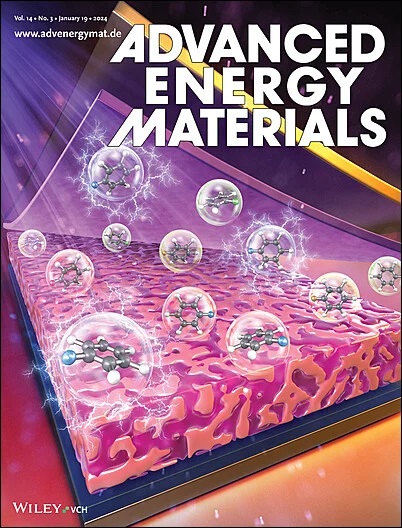Impact of Molecular Structure on Generation in D–A Heterojunction Photocatalysts for Efficient Dye Degradation under Weak Light
IF 24.4
1区 材料科学
Q1 CHEMISTRY, PHYSICAL
引用次数: 0
Abstract
The dual challenges of photocatalysis technology in addressing wastewater pollution and the energy crisis demand advanced photocatalysts with enhanced visible light absorption and efficient charge separation. This work utilizes bulk-heterojunction organic solar cell (BHJ-OSCs) active layers as photocatalytic sources, presenting PM6:PIID-ClBF@BC, a biochar-supported donor-acceptor (D-A) heterojunction organic photocatalyst, designed for water phototreatment and clarify the impacts of molecular structure on photocatalytic activity, simultaneously assist with challenges associated with OSCs waste disposal and resource secondary expansion. PM6:PIID-ClBF@BC achieves complete RhB degradation within 10 minutes and maintains nearly 100% over 20 cycles. Additionally, it generated 28.15 µmol of H₂ within 3 hours, corresponding to a rate of 187.67 µmol h⁻¹ g⁻¹. The superior performance is attributed to its broader visible-light absorption, increased electronegativity (enhanced dipole moment) induced by chlorine substitution, and favorable stacking interactions provide larger electron delocalization, forming a strong internal electric field that drives efficient charge separation and intramolecular charge transfer thereby enhancing reactive oxygen species generation. Electrostatic interactions between PM6:PIID-ClBF@BC and RhB facilitate effective adsorption and catalysis, with higher superoxide radical levels driving degradation. This highlights the crucial role of molecular structure in optimizing photocatalytic performance, offering insights for designing next-generation photocatalysts for environmental remediation and sustainable energy.

求助全文
约1分钟内获得全文
求助全文
来源期刊

Advanced Energy Materials
CHEMISTRY, PHYSICAL-ENERGY & FUELS
CiteScore
41.90
自引率
4.00%
发文量
889
审稿时长
1.4 months
期刊介绍:
Established in 2011, Advanced Energy Materials is an international, interdisciplinary, English-language journal that focuses on materials used in energy harvesting, conversion, and storage. It is regarded as a top-quality journal alongside Advanced Materials, Advanced Functional Materials, and Small.
With a 2022 Impact Factor of 27.8, Advanced Energy Materials is considered a prime source for the best energy-related research. The journal covers a wide range of topics in energy-related research, including organic and inorganic photovoltaics, batteries and supercapacitors, fuel cells, hydrogen generation and storage, thermoelectrics, water splitting and photocatalysis, solar fuels and thermosolar power, magnetocalorics, and piezoelectronics.
The readership of Advanced Energy Materials includes materials scientists, chemists, physicists, and engineers in both academia and industry. The journal is indexed in various databases and collections, such as Advanced Technologies & Aerospace Database, FIZ Karlsruhe, INSPEC (IET), Science Citation Index Expanded, Technology Collection, and Web of Science, among others.
 求助内容:
求助内容: 应助结果提醒方式:
应助结果提醒方式:


